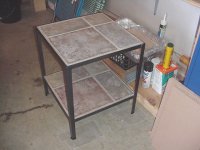marrt
Platinum Member
<font color=green> Before going through modifications, what did Power Trac say about the heat problem? </font color=green>
Well, not much other than “hmm”. I sent Terry some pictures last Friday via email. I think they are a little surprised or don’t think it’s that big a deal. They may be right. My only concern is that they may what to run some tests to ensure its not an issue for future owners. If the battery leaked because of overheating, then its an issue as it may happen to others. If it leaked because the caps were not on tight, then they may want to add a step to the manufacturing process to check battery caps before shipping.
For what its worth, Terry said that PT went to the new muffler because the standard Kohler muffler was not very durable in commercial use. I suspect this may be true as the warranty on the muffler is less than on the engine itself. This new muffler has huge thermal mass. Thirty minutes after mowing, it is still too hot to touch.
I will probably just make a simple shield to stop the air flow from reflecting off the muffler on to the battery, and to interrupt the radiant heat. Then I will follow Charlie’s excellent advice to use some type of pad to insulate the battery. I think everything will be fine then.
Well, not much other than “hmm”. I sent Terry some pictures last Friday via email. I think they are a little surprised or don’t think it’s that big a deal. They may be right. My only concern is that they may what to run some tests to ensure its not an issue for future owners. If the battery leaked because of overheating, then its an issue as it may happen to others. If it leaked because the caps were not on tight, then they may want to add a step to the manufacturing process to check battery caps before shipping.
For what its worth, Terry said that PT went to the new muffler because the standard Kohler muffler was not very durable in commercial use. I suspect this may be true as the warranty on the muffler is less than on the engine itself. This new muffler has huge thermal mass. Thirty minutes after mowing, it is still too hot to touch.
I will probably just make a simple shield to stop the air flow from reflecting off the muffler on to the battery, and to interrupt the radiant heat. Then I will follow Charlie’s excellent advice to use some type of pad to insulate the battery. I think everything will be fine then.
